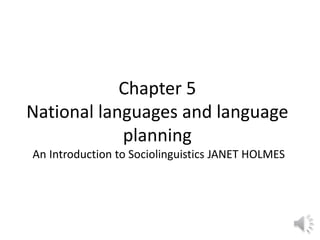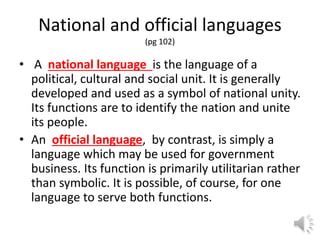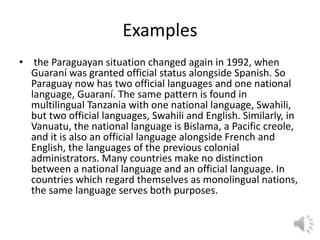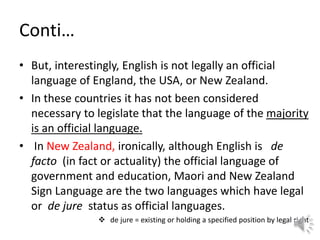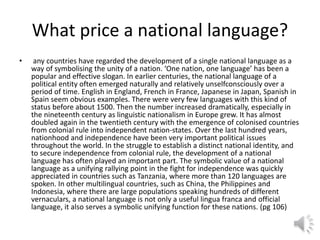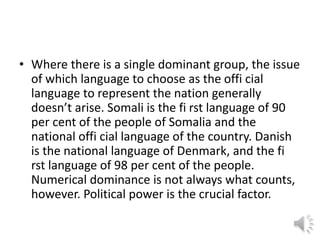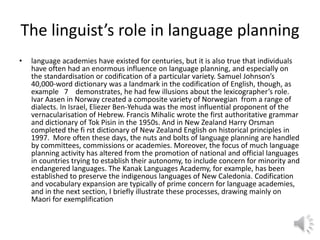This document discusses national and official languages, providing examples from different countries. It defines a national language as the language of a political, cultural, and social unit that symbolizes national unity, while an official language is simply used for government business. Some countries have multiple official languages but one dominant national language. Developing a national language involves selecting a variety, standardizing its structure through codification, extending its functions through elaboration, and securing its acceptance among the population through prestige planning. Linguists often play an important role in the standardization and codification of national languages.
